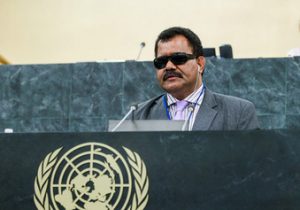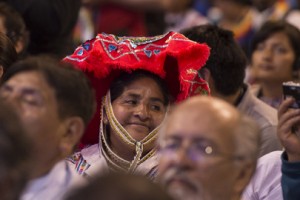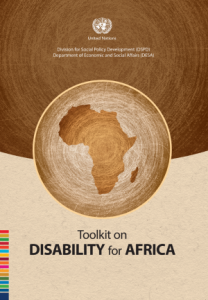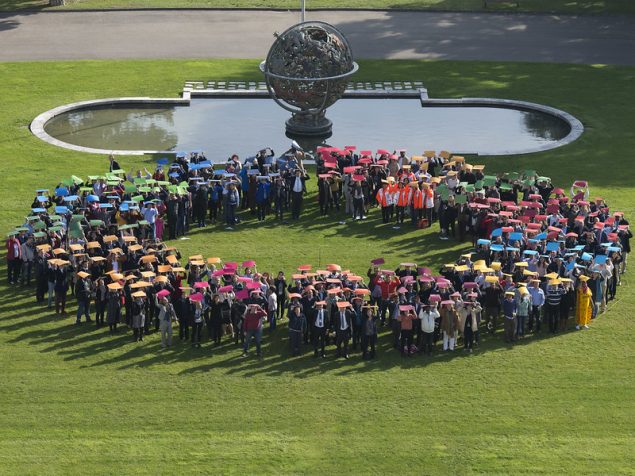
Over 1 billion people, or approximately 15 percent of the world’s population, have disabilities. While no global data exists regarding indigenous persons with disabilities, available statistics show that indigenous peoples are disproportionately likely to experience disability in comparison to the general population. Indigenous persons with disabilities often experience multiple discrimination and face barriers to the full enjoyment of their rights, based on their indigenous status and also on disability.
The international community has recognized that special measures are required to protect the rights of the world”s indigenous peoples. The first instrument that addressed their rights was the 1957 ILO Convention 107, which has been superseded by the 1989 ILO Convention 169 on Indigenous and Tribal Peoples. Over the past few decades the United Nations has increasingly engaged indigenous people through two International Decades as well as the establishment of specific entities that promote their rights within the UN system.
The Permanent Forum on the Rights of Indigenous Peoples is an independent expert body that provides advice to and promotes the coordination of activities related to indigenous peoples within the UN system. The Special Rapporteur on the Rights of Indigenous Peoples (first appointed in 2001) addresses specific cases of human rights violations, conducts country visits and promotes good practices.
Both the international indigenous rights and the international disability rights movements have achieved great advances in recent years. Notably, in 2007, following more than two decades of negotiation, the General Assembly adopted the UN Declaration on the Rights of Indigenous Peoples. In 2006, the General Assembly adopted the UN Convention on the Rights of Persons with Disabilities, which entered into force in 2008.
While both movements have been active on the rights of sub-groups within their constituencies and although both the UNDRIP and the UNCRPD include protections for indigenous peoples with disabilities , the rights of indigenous persons with disabilities have not been addressed centrally by either movement. However, there is a growing effort to change this.
In 2012, at its 11th session, the Permanent Forum on Indigenous Issues, encouraged by the participation of a strong delegation of indigenous persons with disabilities from different regions of the world, appointed two of its members to undertake a study on the situation of indigenous persons with disabilities, with a particular focus on challenges faced with respect to the full enjoyment of human rights and inclusion in development. In preparing the report, an expert meeting was held in Madrid on 20-21 November 2012, which brought together indigenous persons with disabilities from different regions, as well as other experts, including from the UN, working in the areas of indigenous peoples and persons with disabilities.
The report, which was prepared with participation from the Secretariat for the Convention on the Rights of Persons with Disabilities, will be submitted to the Forum at its twelfth session in 2013. The report will likely contain recommendations for further action by Member States, UN entities and both organizations of persons with disabilities and indigenous peoples and indigenous peoples’ organizations to advance the situation of indigenous peoples with disabilities.
Links and resources relating to indigenous persons with disabilities
- Side-event to the 12th session of the UN Permanent Forum on Indigenous Issues: Indigenous persons with disabilities: achieving rights and inclusion in development. A call to action. UN Headquarters, 22 May 2013
- Study on the situation of indigenous persons with disabilities, with a particular focus on challenges faced with respect to the full enjoyment of human rights and inclusion in development (E/C.19/2013/6)
- Side Event on Indigenous Women and Girls with Disabilities held during the half day of General Discussion on women and girls with disabilities of the Committee on the Rights of Persons with Disabilities, Geneva, Switzerland, 17 April 2013
- Interactive panel discussion: “Indigenous Persons with Disabilities: Overcoming Challenges to Achieving Rights and Inclusion in Development”. Side-event to the 11th Session of the United Nations Permanent Forum on Indigenous Issues, 11 May 2012, UN Headquarters
- United Nations Declaration on the Rights of Indigenous Peoples
- International Norms and Standards Relating to Disability: Persons with disabilities and multiple discrimination – Rights of Special Groups: Rights of Indigenous Populations
- Expanding the Circle: Monitoring the Human Rights of Indigenous, First Nations, Aboriginal, Inuit and Métis People with Disabilities in Canada




